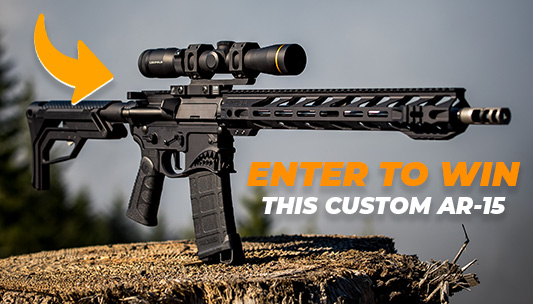Guns & Weapons
Handgun Designs: From Historic Flintlocks to Modern Innovations
Published
3 months agoon
By
Gun Carrier
Throughout the years, handgun designs showcase the brilliance of human innovation. They address pressing challenges and advance cultural and technological shifts. Over the centuries, innovators refined these firearms to meet rising demands for reliability, portability, and efficiency. From the flintlock pistol to today’s state-of-the-art Glock 17, every groundbreaking design tells a powerful story of persistence and progress.
The Evolution of Groundbreaking Handgun Designs
Handguns have undergone a fascinating transformation, driven by the relentless pursuit of innovation, practicality, and reliability. Each breakthrough design redefined what was possible, met the needs of its time, and shaped the future of firearms.
The Flintlock Pistol: A Spark That Changed Everything
In the 1600s, the flintlock pistol transformed firearm reliability by replacing the unpredictable matchlock system. Using flint to ignite gunpowder, this practical design led to a portable and dependable weapon that soldiers, pirates, and civilians quickly adopted.
Why Flintlocks Were Revolutionary
The flintlock pistol simplified firearm operations and made weaponry more practical. Despite its slow reload speed, its compact size improved it over earlier designs. For the first time, personal defense became accessible to more people.
Fun Fact: Flintlock pistols feature prominently in films like Pirates of the Caribbean, which emphasized their role in history and pop culture.
The Colt Revolver: Six Shots That Transformed the Frontier
In 1836, Samuel Colt introduced his revolver, solving the problem of firing multiple shots without reloading. The Colt Single Action Army, nicknamed the “Peacemaker,” became synonymous with the Wild West and was adored by settlers, lawmen, and outlaws.
Why the Colt Was Revolutionary
Colt’s revolver offered unmatched firepower in a single firearm. Its reliability and ease of use made it indispensable in the unpredictable frontier, where survival often depended on speed and accuracy.
Fun Fact
Original Colt revolvers remain highly sought after by collectors for their craftsmanship and historical value.
The Derringer: Small, Simple, and Effective
By the mid-19th century, the Derringer revolutionized self-defense and concealment via its compact and lightweight design. Due to its discreet nature and close-range efficiency, it became a favorite of gamblers, travelers, and spies.
Why the Derringer Stood Out
The Derringer’s compact size allowed for concealed carry in ways that larger firearms couldn’t match. Although it typically fired one or two rounds, it proved that effective self-defense didn’t require a bulky weapon.
Fun Fact
John Wilkes Booth used a Derringer in the assassination of President Lincoln, further cementing the weapon’s historical significance.
Explore more about the evolution of concealed carry on NRA ILA.
The Mauser C96: Europe’s Semi-Automatic Pioneer
The late 19th century brought the Mauser C96, one of the first semi-automatic handguns. Its distinctive “broomhandle” grip and rapid-fire capabilities earned it widespread popularity among military officers and adventurers alike.
Why the C96 Was a Game-Changer
The C96’s semi-automatic mechanism allowed users to fire rounds rapidly without manually cocking the hammer. This innovation made it faster and more efficient in combat situations.
Fun Fact: Winston Churchill carried a Mauser C96 during his military career, which demonstrated its popularity across Europe.
The M1911: The Timeless Workhorse
In 1911, John Moses Browning introduced the M1911, a handgun that became a staple for the U.S. military. This .45 ACP pistol served soldiers during both World Wars, Korea, and Vietnam, and earned a reputation for reliability and stopping power.
Why the M1911 Endures
The M1911 featured a robust design and simple mechanics, ensuring it could withstand extreme conditions. Its influence on semi-automatic handgun designs remains unmatched.
Fun Fact: Despite its age, the M1911 is still favored by competitive shooters and collectors for its accuracy and iconic design.
Learn more about its military legacy at the U.S. Army Center of Military History.
The Glock 17: The Polymer Revolution
In 1982, Gaston Glock introduced the Glock 17, a revolutionary handgun with a polymer frame. This lightweight yet durable firearm quickly became a favorite for police, military, and civilian use.
Why the Glock Redefined Handguns
The Glock 17 combined durability, simplicity, and high magazine capacity. Its modular design allowed users to customize it easily, setting a new standard for handguns.
Fun Fact: The Glock can withstand extreme conditions and can function reliably in freezing cold, scorching heat. It also performs superbly even after being submerged in water.
The SIG Sauer P365: The Micro-Compact Leader
Released in 2018, the SIG Sauer P365 set a new benchmark for concealed carry. It offered a high-capacity magazine in a sleek, ergonomic frame, which made it a favorite for everyday carry.
Why the P365 Stands Out
The P365’s innovative design proved that a micro-compact handgun could still deliver power and capacity. Its popularity led competitors to develop similar designs and spurred industry-wide advancements.
Fun Fact: The P365 earned numerous industry awards, including accolades for innovation and performance.
The Ingenious Legacy of Groundbreaking Handgun Designs
The evolution of groundbreaking handgun designs reflects humanity’s endless drive to innovate. Each design solved critical challenges and reshaped personal defense and military tactics, from flintlocks to polymer-framed pistols.
Whether it’s the rugged Colt revolver, the enduring M1911, or the cutting-edge SIG P365, these designs embody ingenuity and perseverance. Their stories remind us of how innovation continues to change the course of history—and redefine the tools we rely on every day.
What’s your favorite handgun from history?
Have you fired a historic Colt or carried a modern SIG? Share your thoughts in the comments below!
FAQs
- What is the oldest handgun design?
The flintlock pistol, introduced in the 1600s, is one of the oldest and most influential designs. - Why was the Colt revolver revolutionary?
The Colt revolver enabled users to fire multiple rounds without reloading, improving speed and reliability. - How did the Mauser C96 impact firearm innovation?
The Mauser C96 introduced a semi-automatic mechanism, allowing rapid-fire capability without manually cocking the hammer. - What makes the M1911 so enduring?
The M1911 is reliable, powerful, and versatile, remaining relevant after more than 100 years. - Why is the SIG Sauer P365 considered groundbreaking?
Its micro-compact design combined portability with a high-capacity magazine, making it ideal for concealed carry enthusiasts.


How Firearm Technology AI is Revolutionizing Guns and Training

Competitive Shooting: How to Train, Gear Up, and Stay Mentally Sharp

10mm Ammo Resurgence: Why This Powerhouse Is Back in Action

April Gun Shows You Can’t Miss: The Best Firearm Events of the Month

Colt 1911: A Century of Power, Precision, and Prestige

Range Training Tips: 5 Critical Lessons to Sharpen Your Shooting Skills




+ 0.7550454 BTC.NEXT - https://telegra.ph/Get-BTC-right-now-01-22?hs=faf7f192e6fcc785c9cb5a073f97563b&
January 26, 2025 at 10:28 AM
9s4say
You have a email # 274899. Read >>> https://telegra.ph/Ticket--6974-01-15?hs=faf7f192e6fcc785c9cb5a073f97563b&
January 21, 2025 at 2:53 AM
0n2yl2
Email- Operation #NP01. CONTINUE =>> https://telegra.ph/Message--2868-12-25?hs=faf7f192e6fcc785c9cb5a073f97563b&
January 14, 2025 at 7:02 AM
2ibjcp